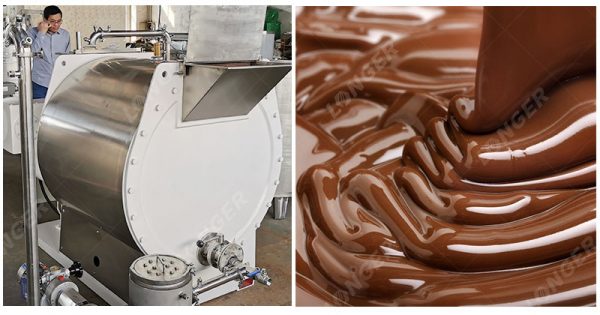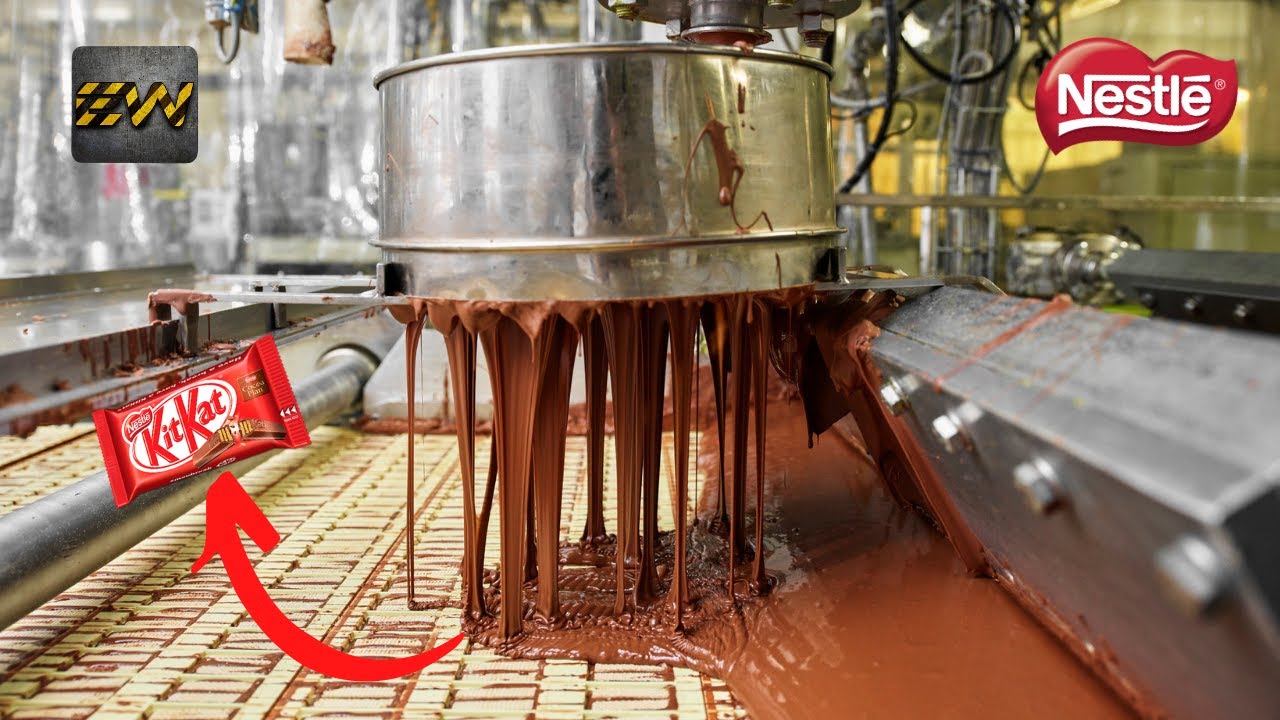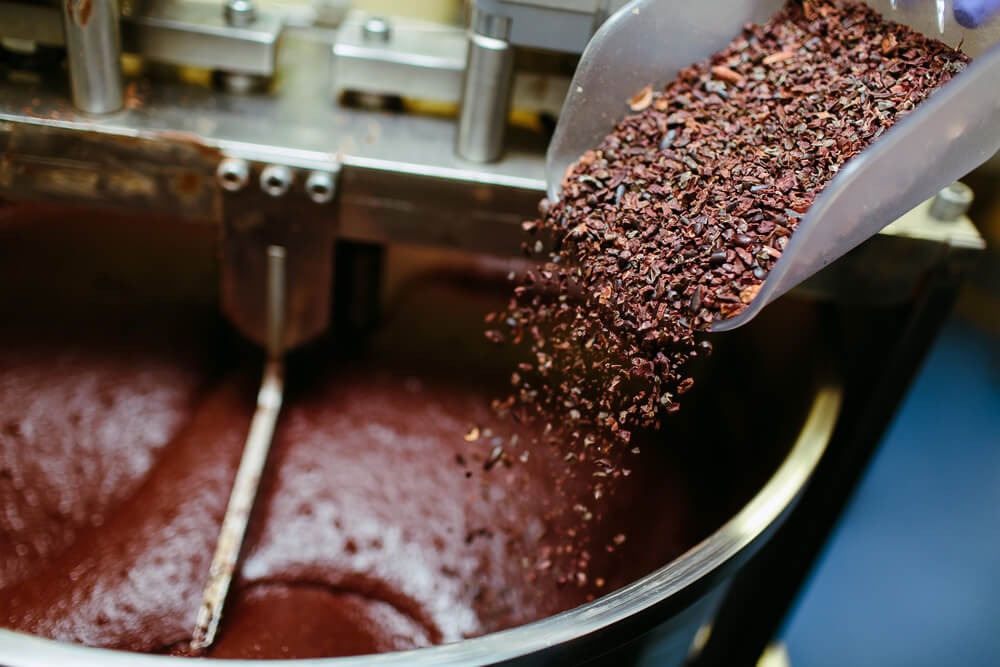Hey there, chocolate lovers! Have you ever wondered what goes into making that delicious Dairy Milk chocolate you crave? From the creamy texture to the sweet taste, there's a fascinating process behind each bar. In this post, we’ll dive into the magic of Dairy Milk chocolate production, exploring its ingredients and the meticulous steps that transform them into your favorite treat. So, grab a piece of chocolate and let’s get started!
The History of Dairy Milk Chocolate Production

The adventure of Dairy Milk chocolate begins way back in the late 19th century. Imagine a time when chocolate was a luxury, enjoyed mostly in its dark form. But then came a revolutionary idea: blending chocolate with milk to create a smoother, creamier experience. This was a game changer!
In 1897, a Bristol-based company called Cadbury took a significant step by launching Dairy Milk chocolate. The brainchild of George Cadbury and his brother, it was designed to be rich in milk and flavor. Here’s a simple timeline of key milestones:
- 1824: John Cadbury starts selling cocoa and drinking chocolate.
- 1866: The first milk chocolate is made by Daniel Peter in Switzerland.
- 1905: Milk chocolate is officially launched as Dairy Milk by Cadbury.
- 1920s: Cadbury becomes the first brand to use a unique recipe, emphasizing the high milk content.
- 1939: Dairy Milk becomes a household name in the UK.
Initially, Dairy Milk was sold in blocks, and it quickly gained popularity, appealing to those with a sweet tooth. Its creamy texture and delightful taste were unlike anything else on the market. The key ingredient? Full-cream milk! Cadbury’s commitment to quality ensured that their chocolate remained a favorite.
As demand grew, the manufacturing process evolved. Factories expanded, and innovations in chocolate-making technology allowed for larger production scales. By the mid-20th century, Dairy Milk was not just a UK favorite; it began to reach international markets. The iconic purple packaging we know today? That was introduced in 1905 and remains a beloved symbol of the brand.
Throughout the years, Dairy Milk has adapted to changing tastes and trends. From introducing nuts and caramels to developing vegan alternatives, Cadbury has kept the essence of Dairy Milk chocolate alive while catering to a diverse audience. Today, it’s not just about a chocolate bar; it’s about creating experiences!
In conclusion, the history of Dairy Milk chocolate is a rich tapestry of innovation, love for quality, and the sweet evolution of chocolate itself. As we continue to indulge in this creamy delight, it’s fascinating to think about the journey each piece takes from factory to our taste buds.
Also Read This: Learn to Set Up an iPhone ID Step-by-Step on Dailymotion
3. Ingredients Used in Dairy Milk Chocolate

When it comes to dairy milk chocolate, the magic truly lies in its ingredients. Each component plays a vital role in shaping the smooth, creamy texture and rich flavor that we all adore. Let's take a closer look at what goes into this delightful treat:
- Cocoa Mass: This is the heart of chocolate! It’s made from roasted cocoa beans, ground into a liquid form. It provides the chocolate flavor, and without it, we wouldn’t have the delicious taste we crave.
- Cocoa Butter: This is the fat extracted from cocoa beans. It gives chocolate its silky texture and helps it melt in your mouth. The higher the cocoa butter content, the creamier the chocolate.
- Milk Powder: The star ingredient that makes dairy milk chocolate so special! Milk powder adds creaminess and sweetness, enhancing the chocolate's flavor profile. It’s often sourced from fresh milk, which is then evaporated and dried.
- Sugar: Sweetness is essential! Sugar balances the bitterness of cocoa and contributes to the overall flavor. The type and amount of sugar can vary but is typically granulated or powdered.
- Lecithin: This is an emulsifier, commonly derived from soy. It helps blend the cocoa, sugar, and milk powder, ensuring a smooth consistency. It also improves shelf life and texture.
- Vanilla: Often used as a flavor enhancer, vanilla adds depth and complexity to the chocolate, making it even more enjoyable.
These ingredients come together in a delightful harmony, creating the beloved dairy milk chocolate that we find in stores. Each brand may have its own secret recipe, but the core components remain largely the same, contributing to that irresistible taste we all love.
Also Read This: How to Make Easy Hairstyle at Home: Quick Hairstyling Tutorial on Dailymotion
4. The Chocolate Production Process

The journey from ingredient to delectable dairy milk chocolate is a fascinating process that combines science and artistry. Let’s break down the steps involved in chocolate production:
- Cocoa Bean Harvesting: It all begins in tropical regions where cocoa trees thrive. Farmers harvest ripe cocoa pods, extracting the beans. These beans are then fermented to develop complex flavors.
- Roasting: The fermented beans are roasted, enhancing their flavor and aroma. This step is crucial, as the roasting temperature and time can significantly affect the final taste of the chocolate.
- Cracking and Winnowing: After roasting, the beans are cracked open, and the outer shells are removed, leaving behind the cocoa nibs—the purest form of cocoa. This process is called winnowing.
- Grinding: The nibs are ground into a paste known as cocoa mass. Heat generated during grinding melts the cocoa butter within the nibs, creating a smooth liquid.
- Mixing Ingredients: In this step, cocoa mass is blended with cocoa butter, milk powder, sugar, and lecithin. The proportions can vary, leading to different chocolate flavors and textures.
- Conching: The mixture is refined in a process called conching, where it’s continuously mixed and aerated. This step helps develop a smoother texture and mellower flavor by reducing the particle size.
- Tempering: The chocolate is tempered by carefully cooling and reheating it to stabilize the cocoa butter crystals. This ensures the chocolate has a glossy finish and a satisfying snap when broken.
- Molding: Once tempered, the chocolate is poured into molds to set. This can be done in various shapes, from bars to fun shapes like hearts or animals!
- Cooling: The molded chocolate is cooled to solidify. This step is essential for achieving that perfect texture and shine.
- Packaging: After cooling, the chocolate is removed from the molds, packaged, and prepared for distribution. Proper packaging helps maintain freshness and quality.
And there you have it! The intricate journey from cocoa bean to the beloved dairy milk chocolate we all enjoy. Each step in the process is crucial, ensuring that the final product is nothing short of delicious.
Also Read This: What to Do When Dailymotion Is Not Working
5. Quality Control in Chocolate Manufacturing
Maintaining high standards in chocolate production is crucial, especially when it comes to dairy milk chocolate. Quality control (QC) ensures that every bar, truffle, or bite-sized piece meets the delicious expectations of consumers. This involves several meticulous steps that every factory follows.
The QC Process begins with Raw Ingredients: The first step is to inspect the quality of the raw materials. Milk powders, sugars, cocoa solids, and emulsifiers must all be checked for freshness and purity. For instance, the milk must be sourced from reputable suppliers, ensuring it’s free from contaminants. Any sub-par ingredient can affect the final product's taste and texture.
During Production: Quality checks happen at various stages of the manufacturing process. When the chocolate is mixed, samples are taken to measure viscosity and taste. Consistency is key! If the chocolate is too thick or lacks flavor, adjustments are made immediately. This is where a skilled chocolatier's palate can shine.
- Melting Stage: The chocolate must be melted to a precise temperature to bring out its rich flavor.
- Conching: This is the process of grinding the chocolate to create a smooth texture. QC checks ensure no gritty particles remain.
- Tempering: Proper tempering is essential for the chocolate's shine and snap. Quality controllers test the chocolate's sheen and snap to ensure perfection.
Final Inspections: Once the chocolate is molded and cooled, it undergoes final quality assessments. This includes checking for:
| Quality Aspect | Inspection Method |
|---|---|
| Appearance | Visual inspection for color and shine |
| Texture | Break test for crispness |
| Taste | Taste tests by trained testers |
| Packaging Integrity | Check for any damage or imperfections |
All these measures ensure that each bar of dairy milk chocolate is not just tasty but also safe for consumers. A single flaw can impact the brand's reputation, so rigorous quality control is non-negotiable in chocolate manufacturing.
6. Packaging and Distribution of Dairy Milk Chocolate
Once the chocolate passes all quality checks, it’s time to package and distribute it. This stage is just as important as production, as it impacts the product’s shelf life, appeal, and ultimately, sales.
Packaging is an Art: The packaging of dairy milk chocolate is designed to protect the product while also being visually appealing. You might notice that many chocolate bars come in vibrant, colorful wrappers with exciting graphics that convey the brand's message.
- Materials Used: Often, a combination of foil and plastic is used. Foil protects the chocolate from moisture and light, while plastic provides durability.
- Design Considerations: The design team works closely with marketing to create eye-catching packaging. They consider everything from color schemes to font styles, ensuring that the packaging reflects the deliciousness inside.
Sustainability: Recently, many chocolate manufacturers are shifting towards eco-friendly packaging. This means using biodegradable materials or recyclable options to reduce their environmental impact. For instance, a brand might use paper wrappers instead of plastic, appealing to the growing number of eco-conscious consumers.
Distribution Channels: Once packaged, dairy milk chocolate is distributed through various channels:
- Retail Stores: Major grocery chains and specialty candy shops are primary outlets.
- Online Sales: E-commerce platforms allow consumers to order their favorite chocolates with just a click.
- Global Shipping: Many brands distribute their products internationally, which involves careful logistics to ensure that the chocolate arrives in perfect condition.
To ensure the chocolate's quality during transportation, manufacturers often use temperature-controlled environments. This helps prevent any melting or other alterations in texture that could occur during transit.
In essence, packaging and distribution are crucial steps in the journey of dairy milk chocolate, ensuring that it reaches consumers in pristine condition while also captivating them visually right from the shelf!
 admin
admin








